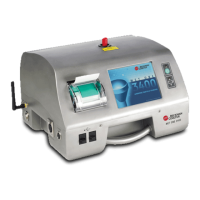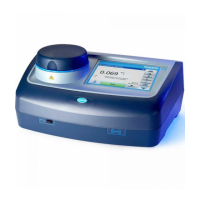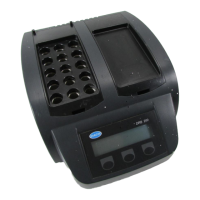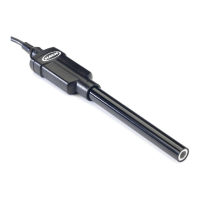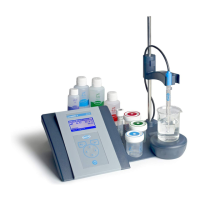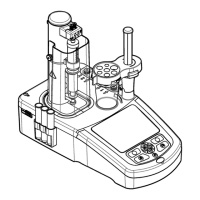Table 8 DIP switch settings for network address (continued)
Network address Switch 1 Switch 2 Switch 3 Switch 4 Switch 5
18 Off On Off Off On
19 On On Off Off On
20 Off Off On Off On
21 On Off On Off On
22 Off On On Off On
23 On On On Off On
24 Off Off Off On On
25 On Off Off On On
26 Off On Off On On
27 On On Off On On
28 Off Off On On On
29 On Off On On On
30 Off On On On On
31 On On On On On
RS485 serial output with FXB protocol
Instruments with the RS485 FXB communication option use industry-
standard FXB protocol. Refer to the company website for FXB protocol
information.
Pulse communication
Instruments with the pulse communication option send an 8-µs pulse
signal when a particle is detected. Refer to Figure 14. An external pulse
counter or data acquisition system receives the pulse signal and counts
the pulses as particles.
Instruments with pulse communication have two pulse output channels
(Ch 1 and Ch 2). Channel 1 sends a pulse signal when the Channel
1 particle size is detected. Channel 2 sends a pulse signal when the
channel size that is selected by the user is detected.
Pulse communication includes a status output signal that goes from low
to high when there is an active alarm. Pulse communication cannot be
used in a network configuration.
Set the network address for pulse communication
instruments to 1.
Refer to Table 8 on page 20.
The pulse signal can be sent in one of two count modes:
• Differential mode (default)—A signal is sent on Channel 1 when a
particle is between the first and the second channel size thresholds. A
signal is sent on the Channel 2 when a particle is larger than the user-
selected channel size threshold.
• Cumulative mode—A signal is sent on Channel 1 when a particle is
larger than the first or second channel size threshold. A signal is sent
on Channel 2 when a particle is larger than the user-selected channel
size threshold.
Figure 14 Differential versus cumulative count mode example
1 Pulse signal sent from counter 4 Channel 1
2 Data transfer in differential versus
cumulative mode
5 Differential count—one 0.3 µm and
two 5.0 µm particles
3 Channel 2 6 Cumulative count—three 0.3 µm
and two 5.0 µm particles
English 21
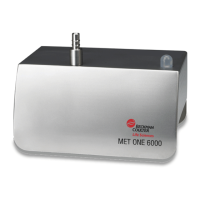
